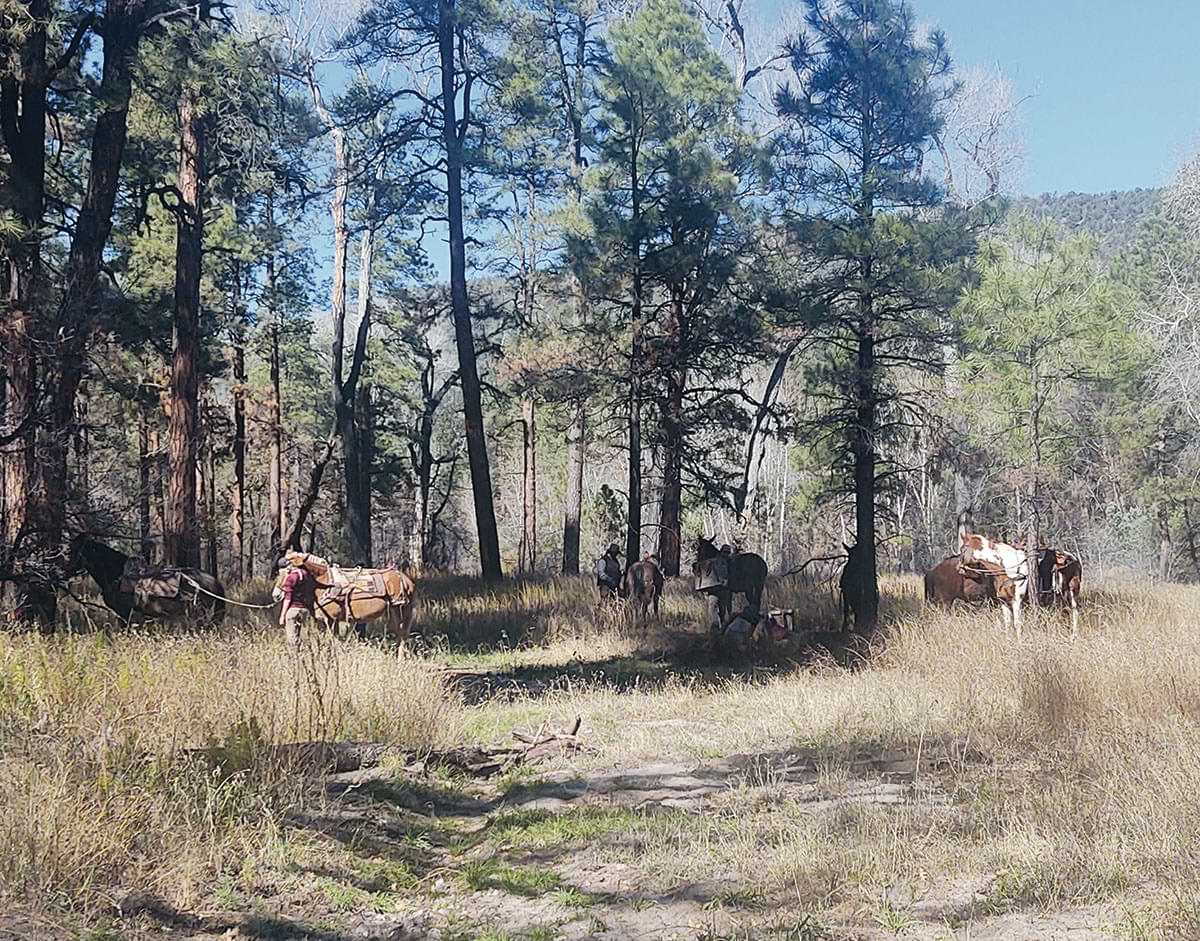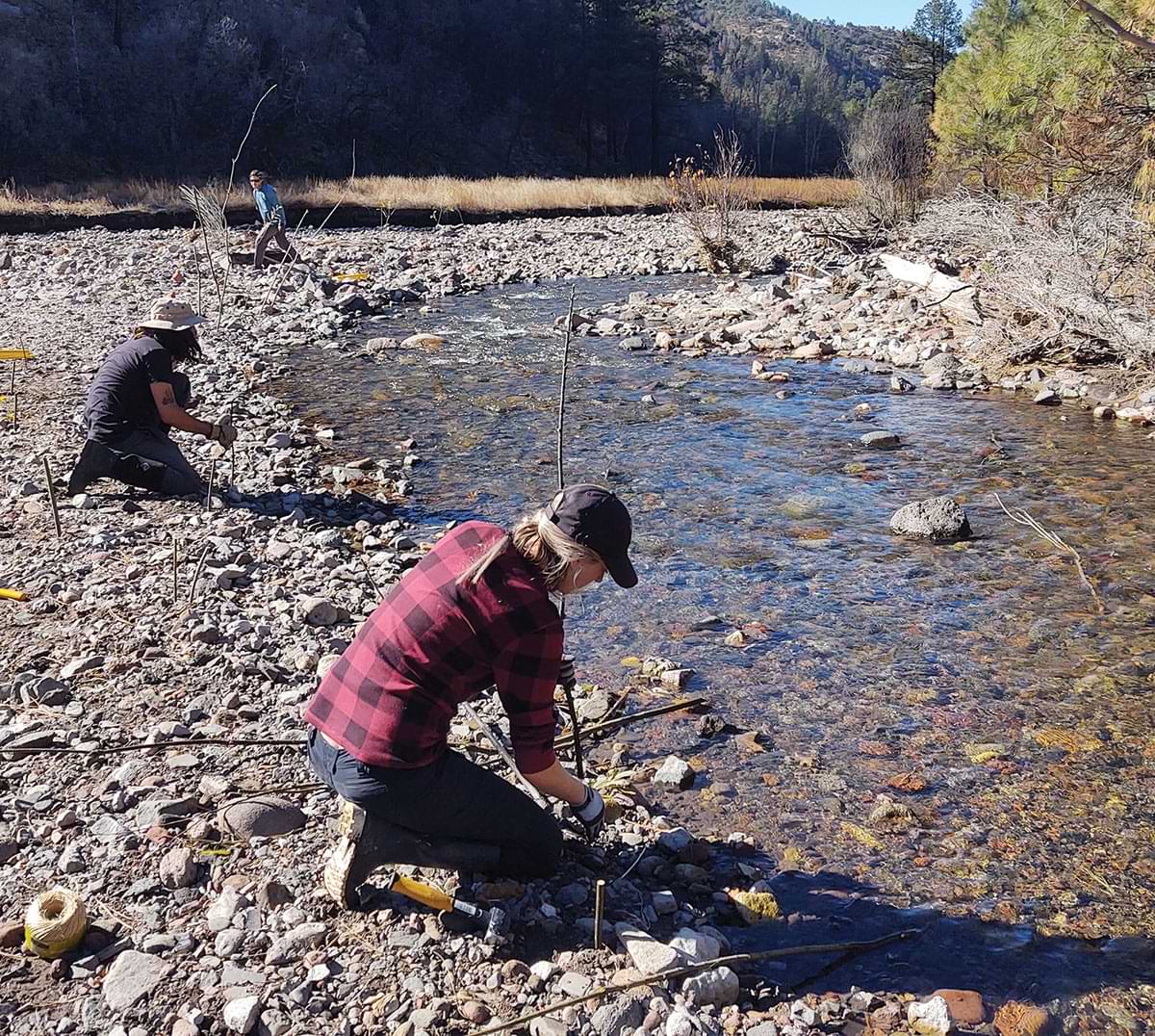
After the Fire

July 2, 2022. The U.S. Forest Service incident commander announces that the fire has been contained, but some areas of the forest, including a thick stand of dead trees on a steep slope, continue to burn. The commander reports that 319 personnel have been deployed to achieve this level of containment.
Sept. 22, 2022. The U.S. Forest Service reports that an Emergency Closure remains in effect within the total fire perimeter of 329 miles and that hazardous conditions and adverse weather conditions have hindered further containment of the fire.
Nov. 8, 2022. Bat Conservation International (BCI) sends a five-person crew into a significant low-elevation riverside (also called riparian) area to restore essential bat and wildlife habitats ravaged by fire.
Their work was downright freezing— cold enough to freeze water bottles in their tents—and outright physical. For five days, the team lugged heavy post pounders and dug holes along two miles of eroded stream banks to dig down through the rock cobble to the water table to plant 850 willows.
“We do what we need to do to help bats survive,” says BCI Senior Restoration Specialist Dan Taylor.

Before the Fire
Today, the forest’s varying elevations, rising from remnant grasslands and desert scrub to ponderosa pine and piñon juniper, support 84 species of mammals, 44 reptiles, 11 amphibian species, and 20 bat species. Taylor says that almost half of the 45 species of bats found in the U.S. and Canada can be found in the Gila National Forest year-round.
In the fall of 2021, at the request of the New Mexico Environment Department Surface Water Quality Bureau, BCI developed a comprehensive work plan to proactively shore up water resources in a riparian floodplain of the national forest, an area dense with bats and other wildlife.

Nature had other plans, however. Just two months later, the Black Fire raged through the area. Then, record rains—among the highest rainfall amounts ever recorded by the Forest Service on a burned watershed—intensified the ecological damage.
Bats were certain to be drastically affected by this disaster, as well. With minimal vegetation remaining for insects to feed on, bats’ food sources would be seriously diminished.
Moving Forward
BCI’s bat habitat restoration efforts in Black Canyon will continue through June 2024. The next trip into the canyon is planned for March 2023, when the crew will continue to plant willows and begin using onsite boulders and large downed logs to shore up eroding stream banks. With hard work and good weather luck, Black Canyon will once again become a vibrant habitat for bats.